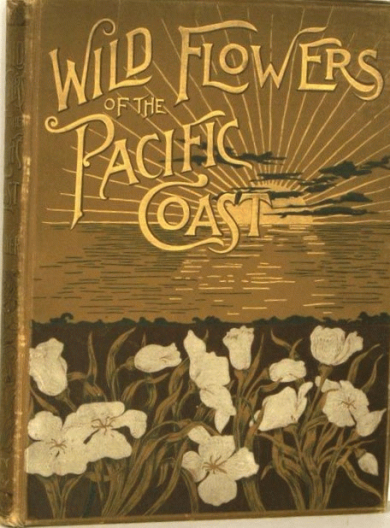 “On the very top of the mound grew this fine salmon blossom, and a few feet away a bed of tall pink grass, the finest I had ever seen. It waved and nodded in the warm breeze, as if inviting me to select its finest bunch to keep company with the pretty white blossoms that had been its neighbors, and from whom it was loth to part company.”
“On the very top of the mound grew this fine salmon blossom, and a few feet away a bed of tall pink grass, the finest I had ever seen. It waved and nodded in the warm breeze, as if inviting me to select its finest bunch to keep company with the pretty white blossoms that had been its neighbors, and from whom it was loth to part company.”
Emma Homan Thayer (1842-1908) wrote these illustrative words, and painted these neighborly plants while visiting Astoria, Oregon in the 1880s. Her “Wild Flowers of the Pacific Coast” (published in 1887) is the earliest guide to the flora of the West Coast in the Miller Library collection. I hesitate to call it a field guide. Instead, it is a series of short travel essays, each tied to a local wild flower. Often the description of the people she encountered is more detailed than that of the flowers. The stories are mostly set in California, but she did make the one visit to Oregon, including a trip by boat from Portland to the mouth of the Columbia River.
In an appendix of “botanical descriptions,” the “fine salmon blossom” is identified as thimbleberry or Rubus nutkanus, but the identity of the grass is not attempted.
Born in New York, Thayer went back to school after her first husband died, attending Rutgers and area art institutions. Late in life, she established a reputation as an author of novels. However, it is for this book, and her similar book, “Wild Flowers of the Rocky Mountains,” that she is best known. While her impressionistic style of illustration lacks the fine detail necessary for certain identification, her books were an introduction, especially for East Coast audiences, to the splendors of the western flora.
Excerpted from the Winter 2020 issue of the Arboretum Bulletin